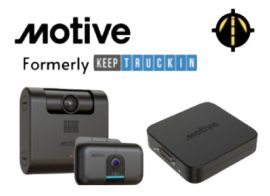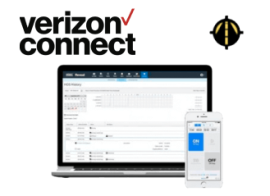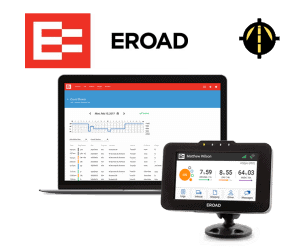Imagine a world where technology doesn’t just simplify our lives but also sustains our planet. Picture this: a dash cam, poised perfectly on your windshield, drawing energy from the sun and recording life’s journeys, all without a tangled mess of wires.
It’s like combining the sleek aesthetics of a wireless future with the green promise of renewable energy. Sounds fascinating for any modern driver, right?
In 2025, the dash cam market is experiencing significant growth, projected to reach $8.34 billion by 2030, up from $5.49 billion in 2025, driven by advancements in AI, cloud connectivity, and high-resolution imaging. At events like Japan IT Week Spring 2025, companies such as Jimi IoT showcased cutting-edge dashcams like the JC371, featuring AI-powered, three-channel LTE capabilities for comprehensive vehicle surveillance.
As technology continues to evolve, the integration of AI and renewable energy sources in dash cams holds promise for a future where drivers can enjoy enhanced safety features while minimizing their environmental footprint.

The Quest for the Perfect Solar Dash Cam
The auto accessory especially the dash cam world is buzzing. Brands like Motive, Peoplenet, and Samsara are racing ahead, always inventing to fit the ever-changing desires of today’s drivers.
But, in the glittering array of offerings, a genuine solar-powered dash cam is oddly missing. Why?
At first glance, a solar dash cam seems like the dream combo of high-tech and green living. As people become more eco-aware and tech-hungry, you’d think this gadget would be on every dashboard.
Drivers dream of a setup where the dash cam, once installed, takes care of itself — charging during the day, recording during their journeys, and conserving energy at night.
It paints a picture of a harmonious blend of utility and sustainability. But, as we dive deeper, we discover some hurdles that might just explain this noticeable absence in the market.
The Solar Dash Cam Dream: What’s Holding It Back?
The idea of a solar-powered dash cam continues to spark curiosity, but despite its promise, several real-world limitations keep it from reaching full potential. Here’s a breakdown of the major roadblocks, updated with 2025 insights:
Solar Efficiency vs. Size Constraints:
Modern dash cams require a consistent power supply, especially with features like 4K video, GPS, and Wi-Fi. Unfortunately, even the latest monocrystalline solar panels, while more efficient than previous generations, still need a larger surface area to generate enough energy.
A full-sized solar panel capable of powering a dash cam all day would be too bulky to mount on a windshield or dashboard. Until breakthroughs in compact, high-output panels emerge, full solar reliance remains unfeasible.
Sunlight Blockage Through Windshields:
Most modern windshields are treated with UV-blocking layers and tints that reduce solar glare, but they also block a significant portion of solar energy. Even clear glass filters out UV-A and UV-B rays, further limiting a solar panel’s exposure to usable light.
Some newer luxury vehicles now use infrared-reflective coatings that further reduce solar penetration, making energy harvesting even harder for internally mounted panels.
Power Drain vs. Charge Rate:
In 2025, dash cams now include AI-driven alerts, cloud syncing, dual or triple camera feeds, and even cabin monitoring. These features increase energy consumption substantially.
Even under ideal sun exposure, solar panels can’t consistently outpace the energy drain of these high-performance units. Power banks or hardwiring remain essential for uninterrupted performance—especially during nighttime, cloudy days, or shaded parking.
Cost vs. Market Demand:
Building a truly self-sufficient solar dash cam would require:
-
High-efficiency solar materials,
-
Durable, compact heat-resistant batteries,
-
Smart energy distribution systems.
This would likely push the price far beyond the $200–$400 price bracket where most quality dash cams currently sit. For mainstream adoption, consumers would need to see clear value over existing battery-capacitor combos—and we’re not quite there yet.
Environmental Durability & Safety:
A solar dash cam would need to survive extreme temperatures—from scorching dashboards in Arizona to frozen windshields in Minnesota. While some brands are developing graphene-layered panels and solid-state batteries, mass adoption is still years out.
Also, excessive heat can degrade lithium-ion batteries and damage internal circuits. Without active thermal management, solar panels could become more of a risk than a solution.
Placement Limitations:
Ideal solar panel placement is directly under sunlight, but dash cams are typically installed behind the rearview mirror—one of the most shaded spots in a car. Alternative placements (e.g., roof-mounted or rear shelf panels) complicate installation and increase risk of theft or damage.
Alternative Solutions and Workarounds
While fully solar-powered dash cams haven’t hit mainstream success, creative alternatives and hybrid solutions are gaining traction especially among tech-savvy drivers and the DIY community.
For instance, using solar trickle chargers or auxiliary batteries. These chargers can be placed in areas with maximum sun exposure, like the rear parcel shelf, and connected to the dash cam. They work to top up a car’s battery, indirectly supporting the dash cam’s power needs.
While solar isn’t quite there yet, AI is. The Motive AI Omnicam is a prime example of where dash cam innovation has truly evolved. Designed for commercial fleets, it offers:
-
Dual-facing cameras (driver + road)
-
Real-time AI analysis for distracted driving, tailgating, and harsh braking
-
Edge-based processing (no cloud delay)
-
High-temperature endurance and industrial-grade battery backup
While it doesn’t harvest energy from the sun, it ensures constant uptime, critical event detection, and secure cloud storage—far more valuable in real-world scenarios than struggling solar panels.
While solar integration is still more of a workaround than a built-in feature, these solutions show that the dream of off-grid dash cam operation isn’t entirely out of reach it just takes creativity, and sometimes a few extra cables.
Our Top 3 Recommendations
The dash cam market is flooded with options, which can make selecting the right one a daunting task. While there aren’t any true solar-powered dash cams available as of now, some innovative users do pair regular dash cams with separate solar panels. But, let’s not let solar be the sole deciding factor.
The following three recommendations aren’t solar-powered, but we’ve selected them based on their battery life, reliability, and overall performance. Their battery-powered mechanism ensures longevity and consistent recording, making them ideal, especially for truckers keen on safeguarding against false accusations and mishaps. Here are our top 3 picks:
Best Overall: Vantrue X4S Dash Cam
The Vantrue X4S Dash Cam continues to impress with its 4K video recording at 30fps, ensuring detailed footage. Equipped with an OmniVision 8M CMOS sensor and a 131° field of view, it captures a broad perspective of the road. The dash cam features a supercapacitor for enhanced durability in extreme temperatures and supports up to 256GB microSD cards for ample storage. Its dual-channel capability allows for an optional rear camera, providing comprehensive coverage. While it lacks a cabin-facing camera, its performance and build quality make it a top choice for most drivers.
Best Design: Blueskysea 4K Dash Cam
The Blueskysea 4K Dash Cam stands out with its compact design and impressive 4K recording capabilities. Utilizing a Sony STARVIS sensor, it delivers clear footage both day and night. The dash cam offers a 170° wide-angle lens, built-in GPS, and Wi-Fi connectivity for easy access to recordings. While some users have reported mixed experiences regarding durability, its affordability and feature set make it a compelling option for those seeking a stylish and functional dash cam.
Best Value: PAPAGO! GoSafe S780 Dash Cam
The PAPAGO! GoSafe S780 Dash Cam offers excellent value with its dual-camera system, capturing both front and rear views in 1080p at 60fps. The front camera features a 150° wide-angle lens, while the rear camera boasts a 180° field of view and is waterproof, making it versatile for various installations. Equipped with Sony Starvis and Exmor sensors, it ensures quality recordings in low-light conditions. Additional features include driver assistance alerts like stop sign recognition and fatigue warnings. While it lacks built-in GPS, an optional antenna can be added for location tracking.
| Feature | Vantrue X4S Dash Cam | Blueskysea 4K Dash Cam | PAPAGO! GoSafe S780 Dash Cam |
|---|---|---|---|
| Video Resolution | 4K UHD 2160p (Front) | 4K UHD 2160p (Front) | 1080p Full HD (Front & Rear) |
| Camera Type | Single or Dual (optional rear cam) | Single (Optional Rear Cam Available) | Dual Channel (Front + Rear) |
| Lens Field of View | 131° | 170° | 150° Front, 180° Rear |
| Sensor Technology | OmniVision 8M CMOS | Sony STARVIS IMX415 | Sony STARVIS (Front) + Sony Exmor (Rear) |
| Storage Support | Up to 256GB microSD | Up to 256GB microSD | Up to 128GB microSD |
| Wi-Fi Connectivity | 5GHz Wi-Fi, App Support | Wi-Fi with App Access | No Wi-Fi (manual transfer) |
| GPS | Optional External Module | Built-in GPS | Optional External GPS |
| Power Source | Supercapacitor | Supercapacitor | Standard Capacitor (Not Supercapacitor) |
| Parking Mode | Supported (Optional Hardwiring Kit) | Buffered Parking Mode | Motion Detection Parking Mode |
| Special Features | Loop recording, Emergency lock, App Control | Night Vision, Emergency Lock, Compact Size | Driver Assist Alerts, Waterproof Rear Cam |
| Price Range (2025) | $200–$250 | $130–$180 | $100–$150 |
Things to Consider When Purchasing a Dash Cam
Before buying a dash cam, it’s important to think beyond just the video quality. With evolving features and higher performance demands, a dash cam in 2025 must meet specific criteria to ensure reliability, safety, and value over time.
Low Storage Capacity
Many entry-level dash cams still come with limited internal storage or low microSD card compatibility (often capped at 64–128GB). With 2K and 4K recording becoming standard, storage fills up quickly, especially if you’re running a dual-channel setup.
Tip:
Choose a dash cam that supports high-capacity microSD cards (256GB–512GB) or, better yet, offers external SSD support. Cloud backup is also emerging as a premium feature in high-end models for seamless, offsite data access.
Overheating Concerns
High-resolution recording, parked vehicle modes, and hot dashboards all contribute to overheating still one of the most common dash cam failure points. In 2025, many quality models now use supercapacitors instead of lithium-ion batteries to handle temperature swings more safely.
Tip:
Look for units with supercapacitors, built-in thermal protection, or automatic shutdown features. Avoid models without proper ventilation if you live in a hot climate.
Video Quality & Field of View
Your dash cam’s main job is to record what matters, clearly. A wide field of view (FOV) between 140° and 170° helps minimize blind spots. Additionally, HDR, Sony STARVIS sensors, and night vision features significantly improve footage in low-light or glare-heavy situations.
Tip:
Always opt for models that shoot at 1440p or 4K with loop recording, emergency locks, and night-enhancement tech—especially for truckers and rideshare drivers.
Compliance With Traffic Laws
Each U.S. state has different laws about dash cam placement, windshield obstruction, and audio recording. In states like California and Illinois, dash cams must be mounted within a specific area of the windshield and require visible indicators for in-cabin recording.
Tip:
Verify your local and state regulations before buying. Ensure the dash cam has adjustable mounts, privacy features, and audio controls to stay compliant and avoid fines.
Smart Features & Connectivity
Modern dash cams now come with dual-band Wi-Fi, voice commands, cloud integration, and AI-based driver assistance. These features can help prevent accidents and automate evidence storage.
Tip:
If budget allows, go for models with app integration for easy file transfers, real-time alerts, and over-the-air firmware updates. Motive and Viofo lead in these smart upgrades.
Putting It All Together
Dash cams have evolved far beyond simple video recorders. In 2025, they’ve become intelligent driving assistants—monitoring road conditions, logging incidents, and offering real-time alerts through AI-powered features. While the dream of a fully solar-powered dash cam is still out of reach due to technical limitations, the innovation in battery life, safety features, and cloud connectivity shows that the industry is moving in the right direction.
The appeal of solar-powered solutions lies in their promise of sustainability and autonomy. But given the constraints around solar efficiency, heat management, and power-hungry features, no commercially available dash cam can currently run solely on solar energy. Hybrid setups and external solar accessories do provide some relief, especially for long-haul drivers, but they aren’t yet a plug-and-play reality for most users.
That said, what matters most right now is choosing a dash cam that’s reliable, durable, and smart enough to protect you on the road. Whether you’re a fleet operator, a rideshare driver, or a safety-conscious commuter, prioritize features like:
-
High-resolution recording (1440p or 4K)
-
Dual-channel or triple-channel coverage
-
Supercapacitors over lithium-ion batteries
-
Night vision and motion detection
-
Cloud connectivity and GPS logging
With options like the Vantrue X4S, Blueskysea 4K, and PAPAGO! S780, today’s market offers powerful choices for every budget while setting the stage for a future that’s greener and even more connected.














 Answer 5 simple questions to request a
Answer 5 simple questions to request a